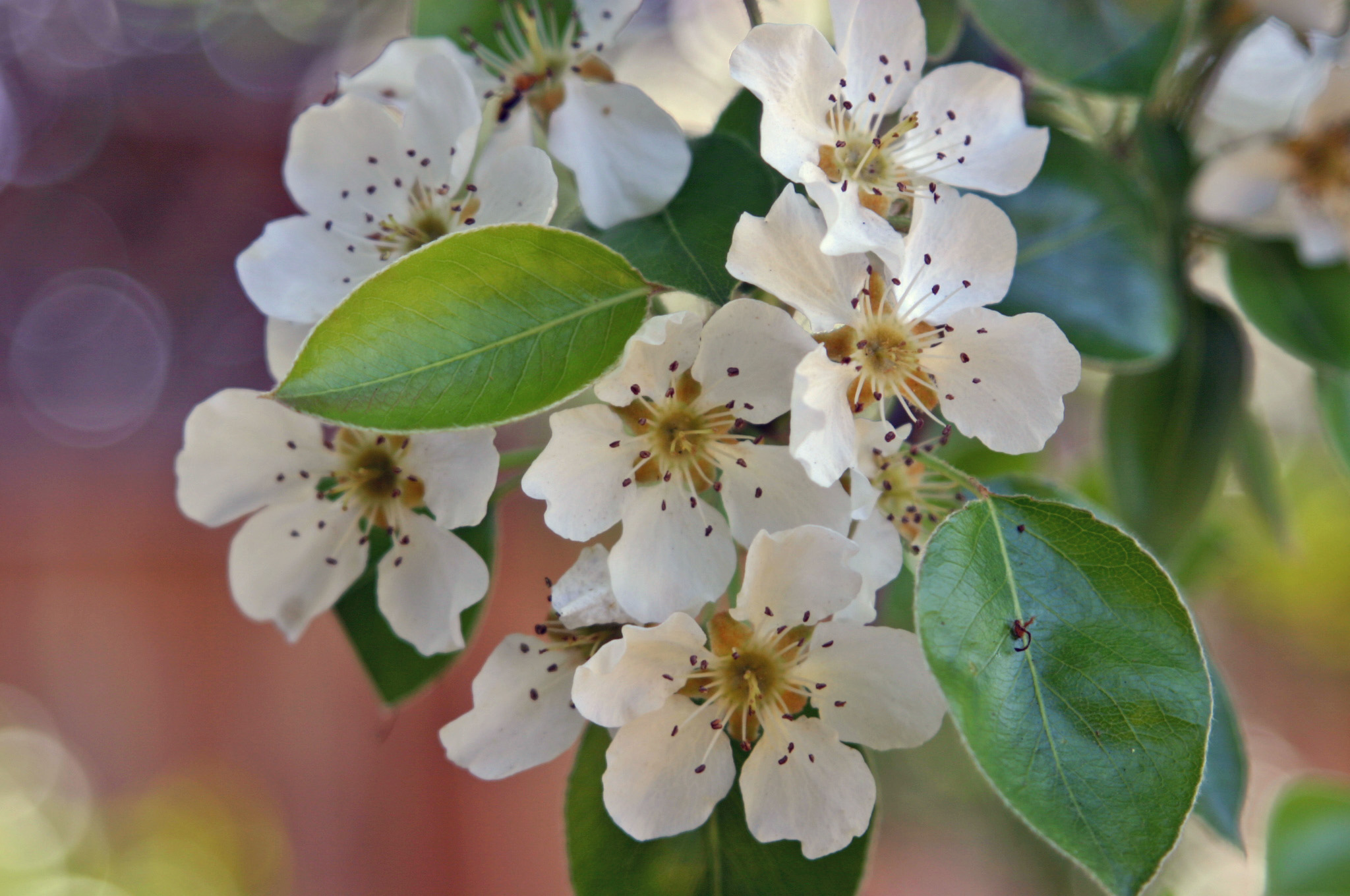|
Rootstocks
A rootstock is part of a plant, often an underground part, from which new above-ground growth can be produced. It could also be described as a stem with a well developed root system, to which a bud from another plant is grafted. It can refer to a rhizome or underground stem. In grafting, it refers to a plant, sometimes just a stump, which already has an established, healthy root system, onto which a cutting or a bud from another plant is grafted. In some cases, such as vines of grapes and other berries, cuttings may be used for rootstocks, the roots being established in nursery conditions before planting them out. The plant part grafted onto the rootstock is usually called the scion. The scion is the plant that has the properties that propagator desires above ground, including the photosynthetic activity and the fruit or decorative properties. The rootstock is selected for its interaction with the soil, providing the roots and the stem to support the new plant, obtaining the neces ... [...More Info...] [...Related Items...] OR: [Wikipedia] [Google] [Baidu] |
Grafting
Grafting or graftage is a horticultural technique whereby tissues of plants are joined so as to continue their growth together. The upper part of the combined plant is called the scion () while the lower part is called the rootstock. The success of this joining requires that the vascular tissues grow together and such joining is called inosculation. The technique is most commonly used in asexual propagation of commercially grown plants for the horticultural and agricultural trades. In most cases, one plant is selected for its roots and this is called the stock or rootstock. The other plant is selected for its stems, leaves, flowers, or fruits and is called the scion or cion. The scion contains the desired genes to be duplicated in future production by the stock/scion plant. In stem grafting, a common grafting method, a shoot of a selected, desired plant cultivar is grafted onto the stock of another type. In another common form called bud grafting, a dormant side bud is ... [...More Info...] [...Related Items...] OR: [Wikipedia] [Google] [Baidu] |
Phylloxera
Grape phylloxera is an insect pest of commercial grapevines worldwide, originally native to eastern North America. Grape phylloxera (''Daktulosphaira vitifoliae'' (Fitch 1855) belong to the family Phylloxeridae, within the order Hemiptera, bugs); originally described in France as ''Phylloxera vastatrix''; equated to the previously described ''Daktulosphaera vitifoliae'', ''Phylloxera vitifoliae''. The insect is commonly just called phylloxera (; from grc, φύλλον, leaf, and , dry). These almost microscopic, pale yellow sap-sucking insects, related to aphids, feed on the roots and leaves of grapevines (depending on the phylloxera genetic strain). On ''Vitis vinifera'', the resulting deformations on roots ("nodosities" and "tuberosities") and secondary fungal infections can girdle roots, gradually cutting off the flow of nutrients and water to the vine.Wine & Spirits Education Trust ''"Wine and Spirits: Understanding Wine Quality"'' pgs 2-5, Second Revised Edition (201 ... [...More Info...] [...Related Items...] OR: [Wikipedia] [Google] [Baidu] |
Vitis Vinifera
''Vitis vinifera'', the common grape vine, is a species of flowering plant, native to the Mediterranean Basin, Mediterranean region, Central Europe, and southwestern Asia, from Morocco and Portugal north to southern Germany and east to northern Iran. There are currently between List of grape varieties, 5,000 and 10,000 varieties of ''Vitis vinifera'' grapes though only a few are of commercial significance for wine and table grape production. The wild grape is often classified as ''Vitis vinifera'' ''sylvestris'' (in some classifications considered ''Vitis sylvestris''), with ''Vitis vinifera'' ''vinifera'' restricted to cultivated forms. Domesticated vines have hermaphrodite#Botany, hermaphrodite flowers, but ''sylvestris'' is plant sexuality, dioecious (male and female flowers on separate plants) and pollination is required for fruit to develop. Grapes can be eaten fresh or dried to produce raisins, Sultana (grape)#Raisins, sultanas, and Zante currant, currants. Grape leaves ar ... [...More Info...] [...Related Items...] OR: [Wikipedia] [Google] [Baidu] |
Pear
Pears are fruits produced and consumed around the world, growing on a tree and harvested in the Northern Hemisphere in late summer into October. The pear tree and shrub are a species of genus ''Pyrus'' , in the family Rosaceae, bearing the pomaceous fruit of the same name. Several species of pears are valued for their edible fruit and juices, while others are cultivated as trees. The tree is medium-sized and native to coastal and mildly temperate regions of Europe, North Africa, and Asia. Pear wood is one of the preferred materials in the manufacture of high-quality woodwind instruments and furniture. About 3,000 known varieties of pears are grown worldwide, which vary in both shape and taste. The fruit is consumed fresh, canned, as juice, or dried. Etymology The word ''pear'' is probably from Germanic ''pera'' as a loanword of Vulgar Latin ''pira'', the plural of ''pirum'', akin to Greek ''apios'' (from Mycenaean ''ápisos''), of Semitic origin (''pirâ''), meaning "fru ... [...More Info...] [...Related Items...] OR: [Wikipedia] [Google] [Baidu] |
Vitis Rupestris
''Vitis rupestris'' is a species of grape native to the United States that is known by many common names including July, Coon, sand, sugar, beach, bush, currant, ingar, rock, and mountain grape. It is used for breeding several French-American hybrids as well as many root stocks. Distribution and ecology The natural distribution of ''Vitis rupestris'' is concentrated in the Ozark Hills of Missouri and Arkansas. The species is less common in scattered populations east as far as Pennsylvania and southwest into Oklahoma and Texas. There are a few reports of the species occurring in the San Francisco Bay area of California, but these are most likely escapes from cultivation. ''Vitis rupestris'' is a self-supporting bushy plant that does not grow in the shade, and is found only on rocky riverbanks and streambanks. Much of its habitat has been destroyed due to damming of rivers and destruction of islands for navigation. ''Vitis rupestris'' has been listed as threatened or endangere ... [...More Info...] [...Related Items...] OR: [Wikipedia] [Google] [Baidu] |
David R David (; , "beloved one") (traditional spelling), , ''Dāwūd''; grc-koi, Δαυΐδ, Dauíd; la, Davidus, David; gez , ዳዊት, ''Dawit''; xcl, Դաւիթ, ''Dawitʿ''; cu, Давíдъ, ''Davidŭ''; possibly meaning "beloved one". was, according to the Hebrew Bible, the third king of the United Kingdom of Israel. In the Books of Samuel, he is described as a young shepherd and harpist who gains fame by slaying Goliath, a champion of the Philistines, in southern Canaan. David becomes a favourite of Saul, the first king of Israel; he also forges a notably close friendship with Jonathan, a son of Saul. However, under the p |




